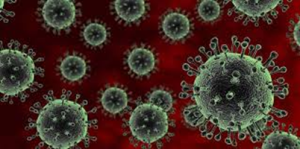Please click the frequently asked questions below for further information and IPC precautions required:
What is Avian Flu?
Bird flu, or avian flu, is an infectious type of influenza that spreads among birds. In rare cases, it can affect humans.
There are lots of different strains of bird flu virus. Most of them don’t infect humans. But there are 4 strains that have caused concern in recent years:
H5N1 (since 1997)
H7N9 (since 2013)
H5N6 (since 2014)
H5N8 (since 2016)
Although H5N1, H7N9 and H5N6 don’t infect people easily and aren’t usually spread from human to human, several people have been infected around the world, leading to a number of deaths.

Why is this information important?
If NIAS staff are aware that the patient has a suspected or confirmed case this should be communicated to the Control Room (Emergency or Non-emergency as appropriate) and the staff in the receiving unit when transferring the patient to ensure effective patient care and management.
How is it spread?
Bird flu is spread by close contact with an infected bird (dead or alive).
This includes:
- touching infected birds
- touching droppings or bedding
- killing or preparing infected poultry for cooking
- Markets where live birds are sold can also be a source of bird flu. Avoid visiting these markets if you’re travelling to countries that have had an outbreak of bird flu.
You can’t catch bird flu through eating fully cooked poultry or eggs, even in areas with an outbreak of bird flu.
Human infections with bird flu viruses can happen when virus gets into a person’s eyes, nose or mouth, or is inhaled. This can happen when virus is in the air (in droplets or possibly dust) and a person breathes it in, or possibly when a person touches something that has virus on it then touches their mouth, eyes or nose. Human infections with bird flu viruses have occurred most often after unprotected contact with infected birds or surfaces contaminated with bird flu viruses. However, some infections have been identified where direct contact with infected birds or their environment was not known to have occurred.
The spread of bird flu viruses from one infected person to a close contact is very rare, and when it has happened, it has only spread to a few people. However, because of the possibility that bird flu viruses could change and gain the ability to spread easily between people, monitoring for human infection and person-to-person spread is extremely important for public health.
What are the symptoms of Avian Flu?
The main symptoms of bird flu can appear very quickly and include:
- a very high temperature or feeling hot or shivery
- aching muscles
- headache
- a cough or shortness of breath
Other early symptoms may include:
- diarrhoea
- sickness
- stomach pain
- chest pain
- bleeding from the nose and gums
- conjunctivitis
It usually takes 3 to 5 days for the first symptoms to appear after you’ve been infected.
Within days of symptoms appearing, it’s possible to develop more severe complications such as pneumonia and acute respiratory distress syndrome.
Getting treatment quickly, using antiviral medicine, may prevent complications and reduce the risk of developing severe illness.
IPC Precautions
- Airborne precautions should be used.
- Hand Hygiene should be completed as per the 5 moments in line with usual practice.
- Eye protection should be worn
- FFP3 Mask should be worn
- Gloves and a long sleeved gown should be worn.
- The patient should be transported via ambulance (eg. PCS) with no other patients present.
- The patient should be asked to wear a Fluid Resistant Surgical Mask (if tolerated and does not interfere with their treatment needs)
- Laundry should be treated as contaminated, placed into an alginate bag and placed into a red laundry bag.
What cleaning is required?
All equipment and the ambulance should have a decontamination clean.
Do staff need any prophylaxis or follow up?
If you believe you have been in contact with a known case of Avian Flu contact your line manager immediately and the IPCT at the earliest convenience who will complete a risk assessment.
Follow-up of contacts is determined by whether appropriate PPE was used.
The day of last exposure should be counted as day 0 for the purposes of determining duration of follow-up and the window for starting antivirals.
Follow-up of contacts where appropriate PPE was used
Contacts of probable wild bird cases or confirmed Avian flu should receive passive follow-up.
Follow-up of contacts where appropriate PPE was not used
Contacts of a probable wild bird case or confirmed Avian Flu in any birds who were not wearing appropriate PPE or had a breach in PPE at the time of exposure should:
- receive antiviral prophylaxis if within 7 days of exposure
- receive active follow-up if within 10 days of exposure
Duration of follow-up
Active follow-up should be undertaken every day up to 10 days from the last unprotected exposure, or for the duration of post exposure antivirals, whichever is longer.
For passive follow-up, contacts should be advised to contact the IPC Team / Occupational Health if they develop any of the symptoms of avian influenza in the 10 days following their last exposure.
